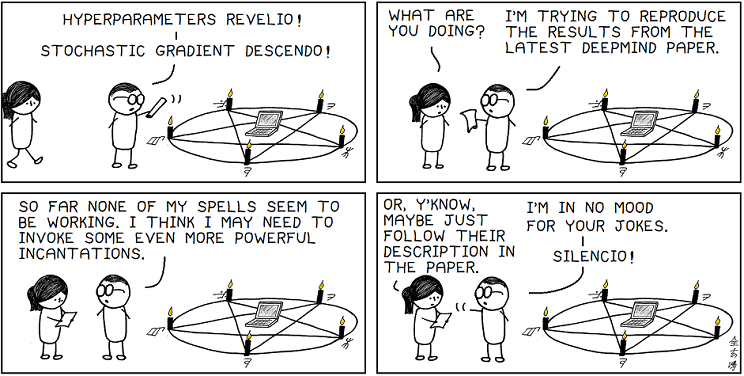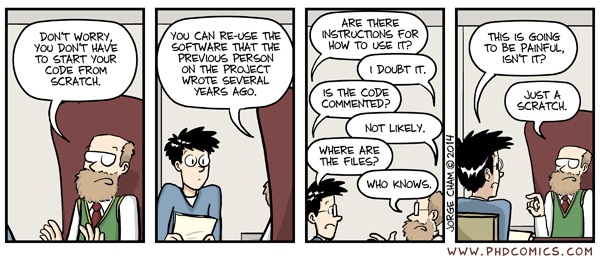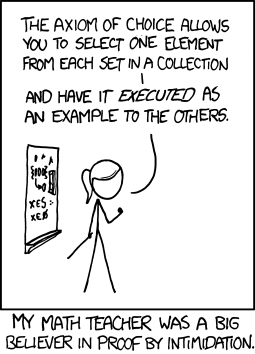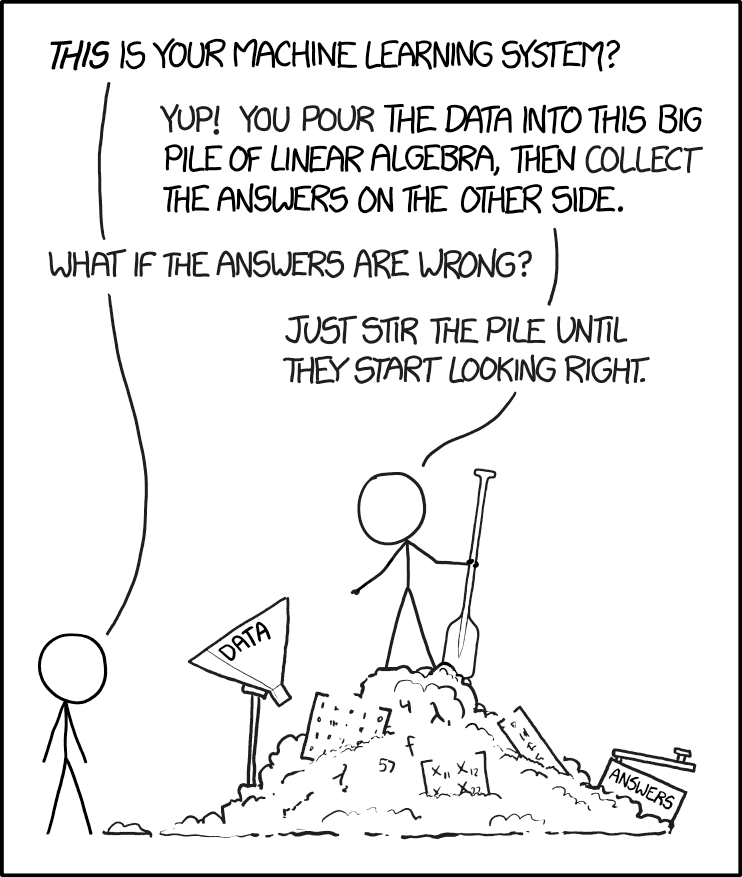
Peer review has been an integral part of scientific research for more than 300 years.
But even before peer review was introduced, reproducibility was a
primary component of the scientific method. One of the first
reproducible experiments was presented by Jabir Ibn Haiyan in 800 CE. In
the past few decades, many domains have encountered high profile cases
of non-reproducible results. The American Psychological Association has struggled with authors failing to make data available. A 2011 study found that only 6% of medical studies could be fully reproduced. In 2016, a survey of researchers from many disciplines found that most had failed to reproduce one of their previous papers. Now, we hear warnings that Artificial Intelligence (AI) and Machine Learning (ML) face their own reproducibility crises.
This leads us to ask: is it true? It would seem hard to believe, as
ML permeates every smart-device and intervenes evermore in our daily
lives. From helpful hints on how to act like a polite human over email, to Elon Musk’s promise of self-driving cars next year, it seems like machine learning is indeed reproducible.
How reproducible is the latest ML research, and can we begin to
quantify what impacts its reproducibility? This question served as
motivation for my NeurIPS 2019 paper.
Based on a combination of masochism and stubbornness, over the past
eight years I have attempted to implement various ML algorithms from
scratch. This has resulted in a ML library called JSAT. My investigation in reproducible ML has also relied on personal notes and records hosted on Mendeley and Github. With these data, and clearly no instinct for preserving my
own sanity, I set out to quantify and verify reproducibility! As I soon
learned, I would be engaging in meta-science, the study of science itself.

Before we dive in, it is important to define what we mean by reproducible.
Ideally, full reproducibility means that simply reading a scientific
paper should give you all the information you need to 1) set up the same
experiments, 2) follow the same approach, and then 3) obtain similar
results.
If we can get all the way to step 3 based solely on information present in the paper, we might call that independent reproducibility. In this example, our result is reproducible because we are able to get the same result, and independent because we have done so in an effort completely independent of the original publication.
But as our friend from the comic above might tell us, simply
following the content of the paper isn’t always sufficient. If we can’t
get to step 3 by using only the information in the paper (or from cited
prior work), we would determine that the paper is not independently
reproducible.
Some may wonder, why make this distinction between reproducibility and independent reproducibility?
Almost all of AI and ML research is based on computer code. We don’t
require the burden of expensive and labor-intensive chemical synthesis,
waiting for bacteria in a petri dish to mature, or pesky human trials.
It should be easy to simply get code from the authors, run that on the
same data, and get the same results!

Our aversion to using or asking for the authors code is more than fear of working with undocumented research-grade code. Chris Drummond has described the approach of using an author’s code as replicability, and made a very salient
argument that replication is desirable, but not sufficient for good
science. A paper is supposed to be the scientific distillation of the
work, representing what we have learned and now understand to enable
these new results. If we can’t reproduce the results of a paper without
the authors code, it may suggest that the paper itself didn’t
successfully capture the important scientific contributions. This is
before we consider the possibility that there may be bugs in the code
that actually benefit the results, or any number of other possible
discrepancies between code and paper.
Another great example from ICML this past year showed that even if we can replicate the
results of a paper, slightly altering the experimental setup could have
dramatically different results. For these reasons, we don’t want to
consider the authors code, as this could be a source of bias. We want to
focus on the question of reproducibility, without wading into the murky
waters of replication.
| Feature | Important | My Reaction |
|---|---|---|
| Hyperparameters | ✅ | 👍 |
| Easy to Read | ✅ | 👍 |
| Equations per Page | ✅ | 🤔 |
| Empirical vs Rigor | ✅ | 🤨 |
| Pseudo Code | ✅ | 🤯 |
| Replies to Questions | ✅ | 🤷 |
| Include Toy Problems | ❌ | 😭 |
| Year Published | ❌ | 😌 |
| Open Source Code | ❌ | 😱 |
I reviewed every paper I have attempted to implement up to 2017, and
filtered out papers based on two criteria: if the attempt would be
biased by having looked at released source code, or if there was a
personal relationship with the authors. For each paper, I recorded as
much information as I could to create a quantifiable set of features.
Some were completely objective (how many authors where on the paper),
while others highly subjective (does the paper look intimidating)? The
goal of this analysis was to get as much information as possible about
things that might impact a paper’s reproducibility. This left me with
255 attempted papers, and 162 successful reproductions. Each paper was
distilled to a set of 26 features, and statistical testing was done to
determine which were significant. In the table to the right I've put
what I think are the most interest and important results, along with my
initial reactions.
Some of the results where unsurprising. For example, the number of
authors shouldn’t have any particular importance to a paper’s
reproducibility, and it did not have a significant relationship.
Hyperparameters are the knobs we can adjust to change an algorithms
behavior, but are not learned by the algorithm itself. Instead, we
humans must set their values (or devise a clever way to pick them).
Whether or not a paper detailed the hyperparameters used was found to be
significant, and we can intuit why. If you don’t tell the reader what
the settings where, the reader has to guess. That takes work, time, and
is error prone! So, some of our results have given credence to the ideas
the community has already been pursuing in order to make papers more
reproducible. What is important is that we can now quantify why these
are good things to be pursuing. Other findings follow basic logic, such
as the finding that papers that are easier to read are easier to
reproduce, likely because they are easier to understand.
I implore you to read the paper for a deeper discussion, but there
are a few additional results that I think are particularly interesting;
either because they challenge our assumptions about what we “know” a
good paper is or lead to some surprising conclusions. All of these
results are nuanced more than I can unpack in this article, but are
worth mentioning if for nothing else but to stimulate a deeper
conversation, and hopefully spur further research to answer these
questions.

It appears to be the case because the most readable papers use the
fewest equations. We often see papers that have many equations and
derivations listed, for any number of reasons. It appears that a careful
and judicious use of equations makes things easier to read, primarily
because you can use math selectively to communicate more effectively.
This result clashes with the incentive structure of getting a paper
published. On more than one occasion, reviewers have asked me to include
more math in a paper. It may be that the math itself makes a paper more
scientific or grounded in objectivity. While more specification may
seem to be better, it is not synonymous with reproducibility. This is a
cultural issue we need to address as a community.
There is considerable debate within the community about where and how
much rigor needs to be normalized in the community. This is done under
the guide that as a community, our focus should be on getting the best
results for a given bench mark. Yet in optimizing for bench marks, we
risk losing our understanding of what is actually happening and why
these methods work. The inclusion of theoretical work and formal proofs
do not cover all aspects of what might be meant by the term rigor. Given
the common belief that elaborate mathematical proofs ensure a better
understanding of a given method, it is interesting to see that greater
mathematical specification isn’t necessarily making research easier to
reproduce. The important point here is that papers containing a mix of
theory and empirical emphasis have the same overall reproduction rates
as purely empirical papers. An empirical bent can be helpful from the
reproducibility perspective, but could also hamper progress by creating perverse incentives and unintended side effects.
We have already touched upon the idea that reproduction via released
code is not the same thing as reproduction done independently. Is this a
difference without distinction? It is not! My results indicate that the
open sourcing of code is at best a weak indicator of reproducibility.
As conferences begin to more strongly encourage code submission and
examination as part of the review process, I believe this is a crucial
point. As a community, we need to understand what our goals are with
such efforts and what we are actually accomplishing. Careful thought and
consideration should go into this distinction if we ever make code
submission mandatory, and the guidance we give reviewers to evaluate
such code.
I find this result particularly noteworthy in terms of other people's
reactions. While presenting at NeurIPS, many people commented on it.
Half of them were certain that releasing would have been correlated with
reproducibility , and the other half felt it obvious that the
non-relationship would emerge. This strong contrast in opinions that
were all deeply held is a perfect example of why I wanted to do this
study. We don't really know until we sit down and measure it!



This finding challenged my assumptions of what constituted a good
paper, but made more sense as I thought about the results. Somewhere in
the paper, the process must be described. A computer scientist by
training, I always preferred a type of description called pseudo code.
But pseudo code can take many different forms. I categorized the papers
it into four groups: None, Step-Code, Standard-Code, and Code-Like. I
have some representative samples of these to the right from some widely
reproduced papers that may or may not have been in this study!
I was shocked when Standard-Code and Code-Like has roughly equal
reproduction rates, and floored to discover that None at all was just as
good! However, cogent writing is just as effective in communicating a
process. What was not as effective was so-called Step code, where a
bulleted list of steps is listed, with each step referring to another
section of the paper. Step code actually makes reading and understanding
the paper harder, as the reader must now jump back and forth between
different sections, rather than following a single sequential flow.
This was another surprising result that I am still coming to grips
with. I’ve always valued writers who can take a complex idea and boil it
down to a simpler and more digestible form. I have likewise appreciated
papers that create so-called toy problems. Toy problems which exemplify
some property in a way that is easily visualized and turned into
experiments. Subjectively, I always found simplified examples useful for
understanding what a paper is trying to accomplish. Reproducing the toy
problem was a useful tool in creating a smaller test case I could use
for debugging. From an objective standpoint, simplified examples appear
to provide no benefit for making a paper more reproducible. In fact,
they do not even make papers more readable! I still struggle to
understand and explain this result. This is exactly why it is important
for us as a community to quantify these questions. If we do not do the
work of quantifiction, we will never know that our work is tackling the
issues most relevant to the research problem at hand.
The last result I want to discuss is that replying to questions has a
huge impact on a paper’s reproducibility. This result was expected, as
not all papers rarely contain a perfect description of their methods. I
emailed 50 different authors with questions regarding how to reproduce
their results. In the 24 cases where I never got a reply, I was able to
reproduce their results only once (a 4% success rate). For the remaining
26 cases in which the author did respond, I was able to successfully
reproduce 22 of the papers (an 85% success rate). I think this result is
most interesting for what it implies about the publication process
itself. What if we allowed published papers to be updated over time,
without it becoming some kind of “new” publication? This way, authors
could incorporate common feedback and questions into the original paper.
This is already possible when papers are posted on the arXiv;
this should be the case for conference venue publications as well.
These are things that could potentially advance science by increasing
reproducibility, but only if we allow them to happen.

This work was inspired by the headline, “Artificial intelligence faces reproducibility crisis”. Is this headline hype or does it point to a systematic problem in the field? After completing this effort, my inclination is that there is room for
improvement, but that we in the AI/ML field are doing a better job than
most disciplines. A 62% success rate is higher than many meta-analyses
from other sciences, and I suspect my 62% number is lower than reality.
Others who are more familiar with research areas outside of my areas of
expertise might be able to succeed where I have failed. Therefore, I
consider the 62% estimate to be a lower bound.
One thing I want to make very clear: none of these results should be
taken as a definitive statement on what is and what is not reproducible.
There are a huge number of potential biases that may impact these
results. Most obvious is that these 255 attempts at reproduction were
all done by a single person. There are no community standards for
internal consistency between meta-analysts. What I find easy to
reproduce may be difficult for others, and vice-versa. For example, I
couldn’t reproduce any of the Bayesian or fairness-based papers I
attempted, but I don’t believe that these fields are irreproducible. My
personal biases, in terms of background, education, resources,
interests, and more, are all inseparable from the results obtained.
That said, I think this work provides strong evidence for a number of
our communities’ current challenges while validating many
reproducibility efforts currently under way in the community. The
biggest factors are that we cannot take all of our assumptions about
so-called reproducible ML at face value. These assumptions need to be
tested, and I hope more than anything that this work will inspire others
to begin quantifying and collecting this data for themselves. As a
community, we are in a very unique position to perform meta-science on
ourselves. The cost of replication is so much lower for us than for any
other field of science. What we learn here could have impacts that
extend beyond AI & ML to other subfields of Computer Science.
More than anything, I think this work reinforces how difficulties of
evaluating the reproducibility of research. Considering each feature in
isolation is a fairly simple way to approach this analysis. This
analysis has already delivered a number of potential insights,
unexpected results, and complexities. However, it does not begin to
consider correlations among papers based on authors, and representing
the data as a graph, or even just looking at non-linear interactions of
the current features! This is why I’ve attempted to make much of the data publicly available so that others can perform a deeper analysis.
Finally, it has been pointed out to me that I may have created the
most unreproducible ML research ever. But in reality, it leads to a
number of issues regarding how we do the science of meta-science, to
study how we implement and evaluate our research. With that, I hope I’ve
encouraged you to read my paper for further details and discussion.
Think about how your own work fits into the larger picture of human
knowledge and science. As the avalanche of new AI and ML research
continues to grow, our ability to leverage and learn from all this work
will be highly dependent on our ability to distill ever more knowledge
down to a digestible form. At the same time, our process and systems
must result in reproducible work that does not lead us astray. I have
more work I would like to do in this space, and I hope you will join me.
Dr. Edward Raff is a
Chief Scientist at Booz Allen Hamilton, Visiting Professor at the
University of Maryland, Baltimore County (UMBC), and author of the JSAT machine learning library. Dr. Raff leads the machine learning research
team at Booz Allen, while also supporting clients who have advanced ML
needs. He received his BS and MS in Computer Science from Purdue
University, and his PhD from UMBC. You can follow him on Twitter @EdwardRaffML.